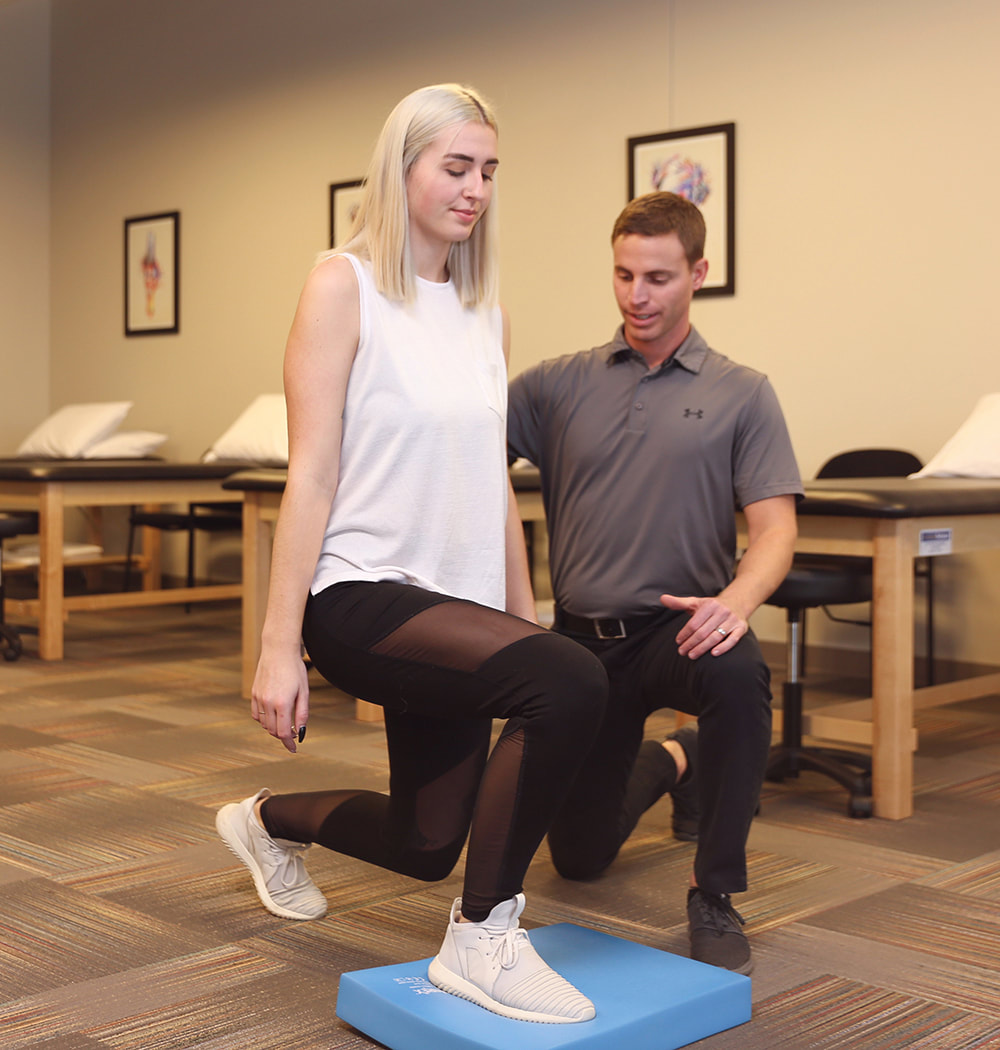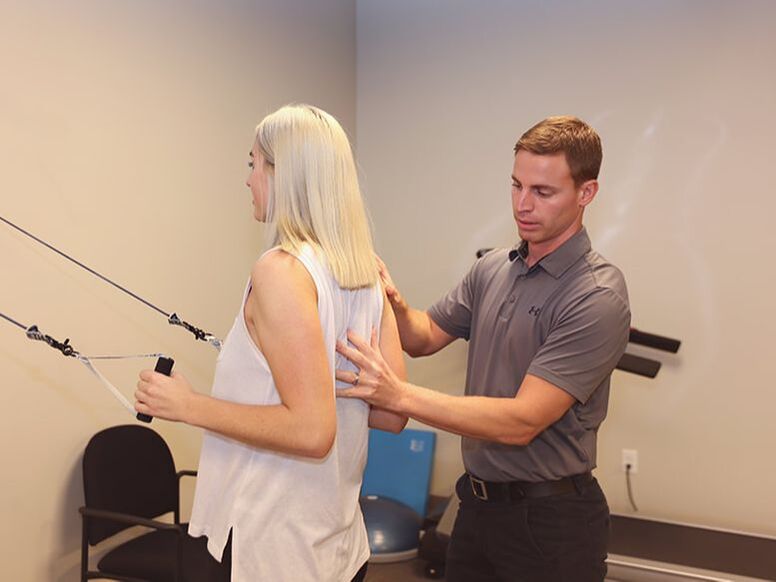SpineIf your back hurts, physical therapy can be your ticket to relief. It eases pain and helps you move. If you seek therapy when your back problems first show up, you might be able to avoid surgery. If you do need a more invasive procedure, physical therapy can help you recover. VestibularEvidence has shown that vestibular physical therapy can be effective in improving symptoms related to many vestibular (inner ear/balance) disorders. People with vestibular disorders often experience problems with vertigo, dizziness, visual disturbance, and/or imbalance. ModalitiesPhysical therapists are trained in the therapeutic application of various basic physical agents that we call modalities. These agents are thermal (heat and cold), electrical stimulation, ultrasound, iontophoresis, light and mechanical. They are used to reduce pain and joint swelling, reduce muscle spasm, restore functional joint mobility, increase local blood flow to injured tissues and deliver medications in conjunction with other procedures. Sports InjuriesWhether it be during an organized event or pick up game of basketball, injuries are a part of any sport. As much as athletes try to avoid it, eventually, someone will suffer from one. Physical therapy will help an athlete rebuild strength and movement after an injury with different exercises, stretches, and techniques utilizing specialized equipment to address the injury. Fall PreventionBalance training exercises are used in a controlled setting to help the body improve reactions to unstable environments, decreasing the risk of falls. Dynamic strengthening exercises will also prepare the body to respond and react to a loss of balance with less risk of falling. Work ConditioningIf you have experienced an injury at your place of work that results in needing rehabilitation, you may be placed into a physical therapy work conditioning program. A work conditioning program focuses on preparing the body to physically be able to complete the tasks required at work. Physical Therapists focus on improving an employee's strength, flexibility, and endurance to the point that they can safely return to the job they were performing before the injury. Graston Technique CertifiedGraston Technique® is an innovative, evidence-based form of instrument-assisted soft tissue mobilization that enables clinicians to effectively break down scar tissue and fascial restrictions. It has been found to be effective as much as 75% to 90% of the time in a range of conditions. This evidence has shown that the Graston Technique: Separates and breaks down collagen cross-links, splaying and stretching connective tissue and muscle fibers. |
Functional ExerciseFunctional exercises train your muscles to work together and prepare them for daily tasks by simulating common movements you might do at home, at work, or in sports. While using various muscles in the upper and lower body at the same time, functional fitness exercises also emphasize core stability. Manual TherapyManual therapy techniques are skilled hand movements and skilled passive movements performed by a trained physical therapist of joints and soft tissue, and are intended to improve tissue extensibility, increase range of motion, induce relaxation, mobilize soft tissue and joints, decrease pain, and reduce soft tissue swelling, inflammation, or restriction. PT Across The LifespanPhysical therapists care for people of all ages and abilities. They diagnose and treat existing health conditions, but they also offer patient education, customize plans of care, and provide preventative treatments that can help people avoid many health problems before they occur. Functional Dry NeedlingDry Needling is a therapeutic treatment procedure that involves advancing a thin filament needle into the muscle in an area of the body which produces pain and typically contains a ‘Trigger Point’. It is an effective treatment for acute and chronic pain, rehabilitation from injury, and even pain and injury prevention. SportmetricsHigh school athletes have a 1 in 100 chance of tearing their ACL. If your sport includes cutting, jumping, landing and pivoting, your risk of injuring your ACL is even higher. Sportsmetrics™ is the first training program scientifically proven to improve neuromuscular ability in athletes by increasing strength and teaching athletes how to land during a jump as well as cut and pivot in safe positions, while maintaining proper body positioning. Certified in SFMAThe SFMA (or Selective Functional Movement Assessment) is a clinical assessment for those who experience pain. It is a movement based diagnostic system which systematically finds the cause of pain —not just the source — by logically breaking down dysfunctional movement patterns in a structured, repeatable assessment. Titleist Performance Institute (TPI) CertifiedTPI Medical Certification gives medical professionals golf-specific injury assessment and rehabilitation techniques to get players back in the game. TPI has spent almost two decades studying one thing – the Body-Swing Connection™. There are injuries associated with the golf swing that few understand better than TPI. The Titleist Performance Institute Golf Assessment is a 60 minute assessment which involves a 13 point physical evaluation which will address your physical capabilities and relate them to your golf swing. You will then be given a personalized strength and flexibility program to address your needs. |



